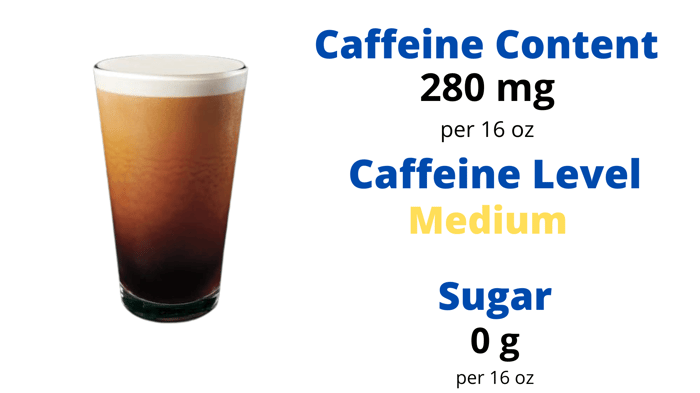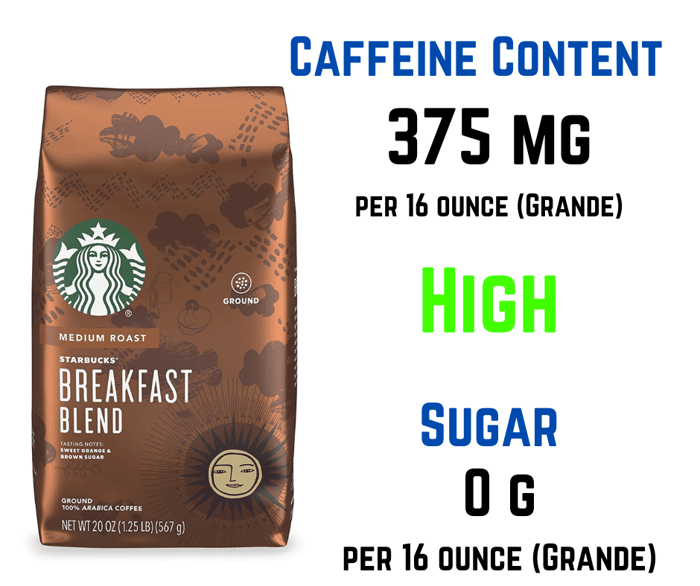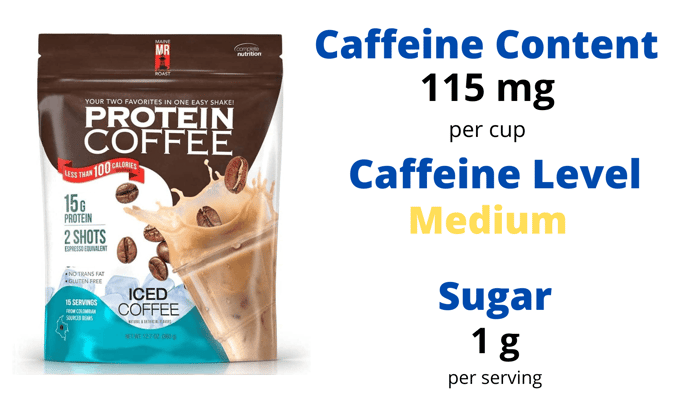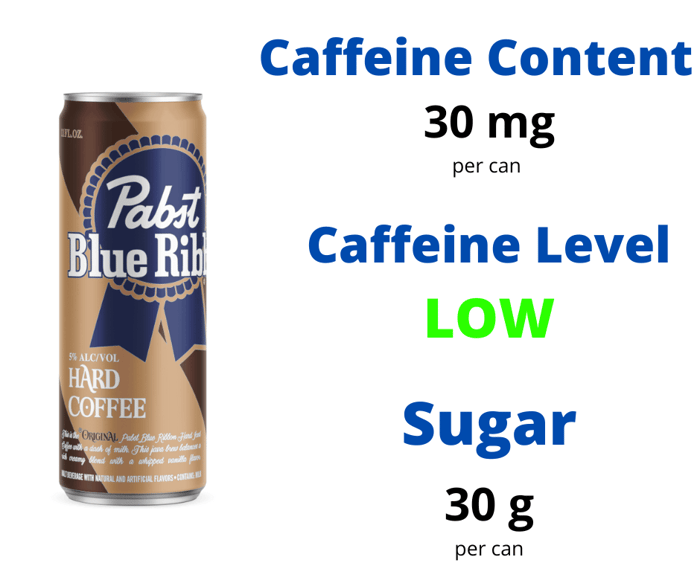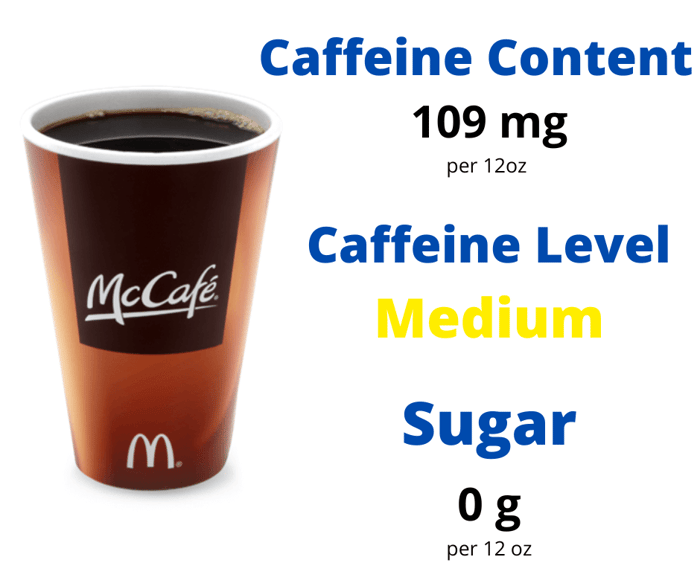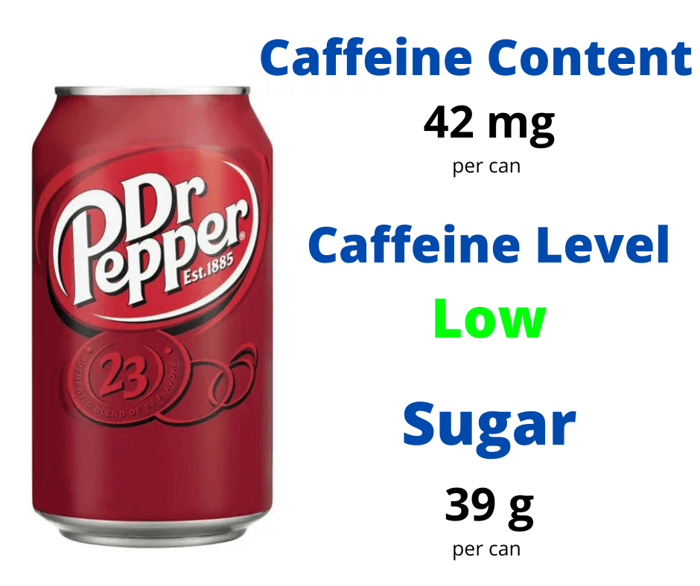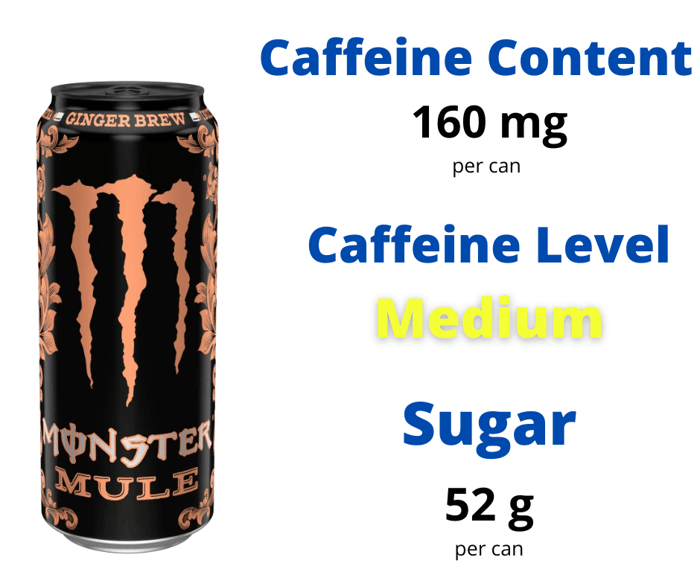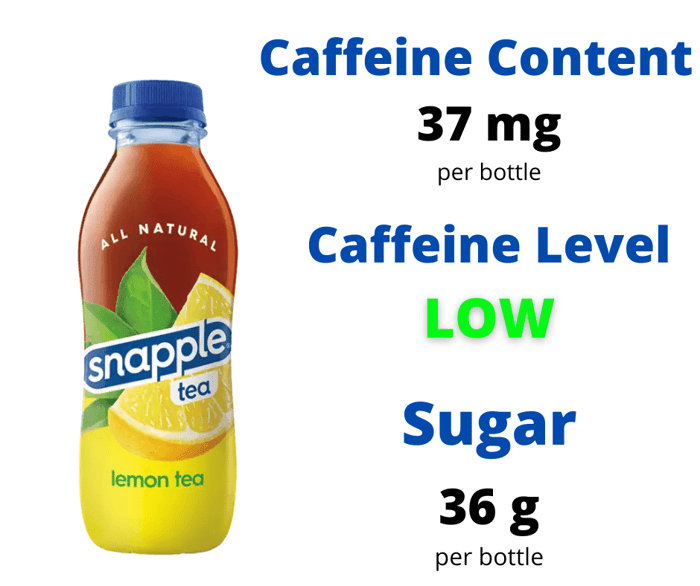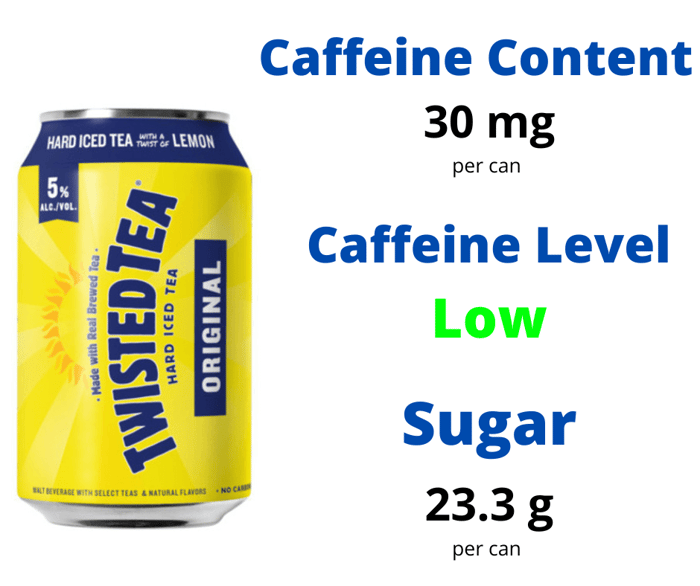A few years ago Starbucks introduced their Nitro Cold Brew coffee as a smoother and sweeter version of their regular cold brew. The infused nitrogen offers a creamy sweetness without the need for adding calorie-dense creamers or sugar. Nitrogen infused into the coffee also cools the beverage and this is why it is served without ice.
Benefit? More coffee in the cup!
So just how much caffeine does the Nitro Cold Brew have and how does it compare to other caffeinated beverages?
What is the caffeine content of Starbucks Nitro Cold Brew?
Starbucks Nitro Cold Brew when ordered as a 16-ounce (Grande) will contain roughly 17.5 mg of caffeine per ounce for a total of 280 mg of caffeine.
The caffeine content is based on restaurant brewing and not the take home cans. If you add vanilla sweat cream to the drink the caffeine totals drop by an estimated 15 mg in each size.
| Serving Size | Caffeine (MG) | Sugar (G) |
| 12 oz (Tall) | 215 | 0 |
| 16 oz (Grande) | 280 | 0 |

Is Starbucks Nitro Cold Brew Coffee High In Caffeine Content?
At 17.5 mg of caffeine per brewed ounce and 280 mg in a 16-ounce size, the Nitro Cold Brew is about 1.5 times more caffeinated compared to most standard grocery store brands but comes in noticeably behind the Starbucks Veranda Blend.
Since the FDA states 400 mg of caffeine to be generally considered as safe for healthy adults, drinking more than one of these a day shouldn't be an issue for the average healthy adult but we would not suggest going beyond two in a day's time.
Comparison to other drinks
| Average Caffeine Content | MG of Caffeine |
| Black Insomnia Coffee | 1105 |
| Bang Energy | 300 |
| Starbucks Nitro Cold Brew | 280 |
| 80 | |
| Coca-Cola Classic | 34 |
Sugar And Calories in Starbucks Nitro Cold Brew
A Nitro Cold Brew will not have any sugar and an estimated 5 calories per 16-ounce cup. Ordering the Vanilla Sweet Cream version will increase your sugar and calorie content but the regular cold brew is served as just coffee.
How Long Does Caffeine Stay in Your System?
Caffeine has a half-life of 6 hours, meaning that half of the amount you consumed will be out of your body within 6 hours. The other half will take another 4-6 hours to leave, so you'll need to wait 12 hours for complete clearance from your system. But this is just an average; some people may clear it more quickly than others due to individual factors such as age and genetics.
Caffeine In Other Starbucks Drinks
|
Drink |
Short (8oz) |
Tall (12oz) |
Grande (16oz) |
Venti (20oz) |
| Bottled Frappuccino | N/A | 110 mg (13.7oz) | N/A | N/A |
| Breakfast Blend | 170 mg | 280 mg | 375 mg | 445 mg |
| Cafe Americano | 75 mg | 150 mg | 225 mg | 300 mg |
| Nitro Cold Brew | 215 mg | 280 mg | N/A | N/A |
| Pike Place | 155 mg | 235 mg | 310 mg | 410 mg |
| Pumpkin Spice Latte | 75 mg | 75 mg | 150 mg | 150 mg |
| Veranda Blend | 180 mg | 270 mg | 360 mg | 425 mg |
Our Review Of The Nitro Cold Brew
The Nitro Cold Brew is a nice alternative for those who want a respectively caffeinated beverage without the high calories of most Starbucks sugar bombs on their menu.
The Nitro infusion creates a creamy and smooth coffee with a hint of sweetness. The Nitrogen Gas helps lower the acidity level and bitterness of typical coffee and naturally chills your coffee so you won't need a cup of ice.
A common myth is that Starbucks will not serve this as a Venti due to caffeine limits but this has been stated to be false by their CEO. Our suspicion is this comes down to profit margins as the lack of ice means a lot more coffee will be in each cup size. We estimate the Grande would fill a Venti cup if you accounted for the normal amount of ice that Starbucks Barista's throw in.
Where To Buy Starbucks Nitro Cold Brew?
- While the regular Nitro Cold Brew is only available at the coffee shop, you can find their canned version at most gas stations and on Amazon.
- Looking for something else? Check out all the coffee options from Meadow Ridge Coffee.
How Do We Know The Caffeine Content?
Our staff uses several methods to find and compile caffeine content. We check the manufacturer or brand's website, packaging, and other published online resources including medical publications, and if all else fails emailing the brand directly.

